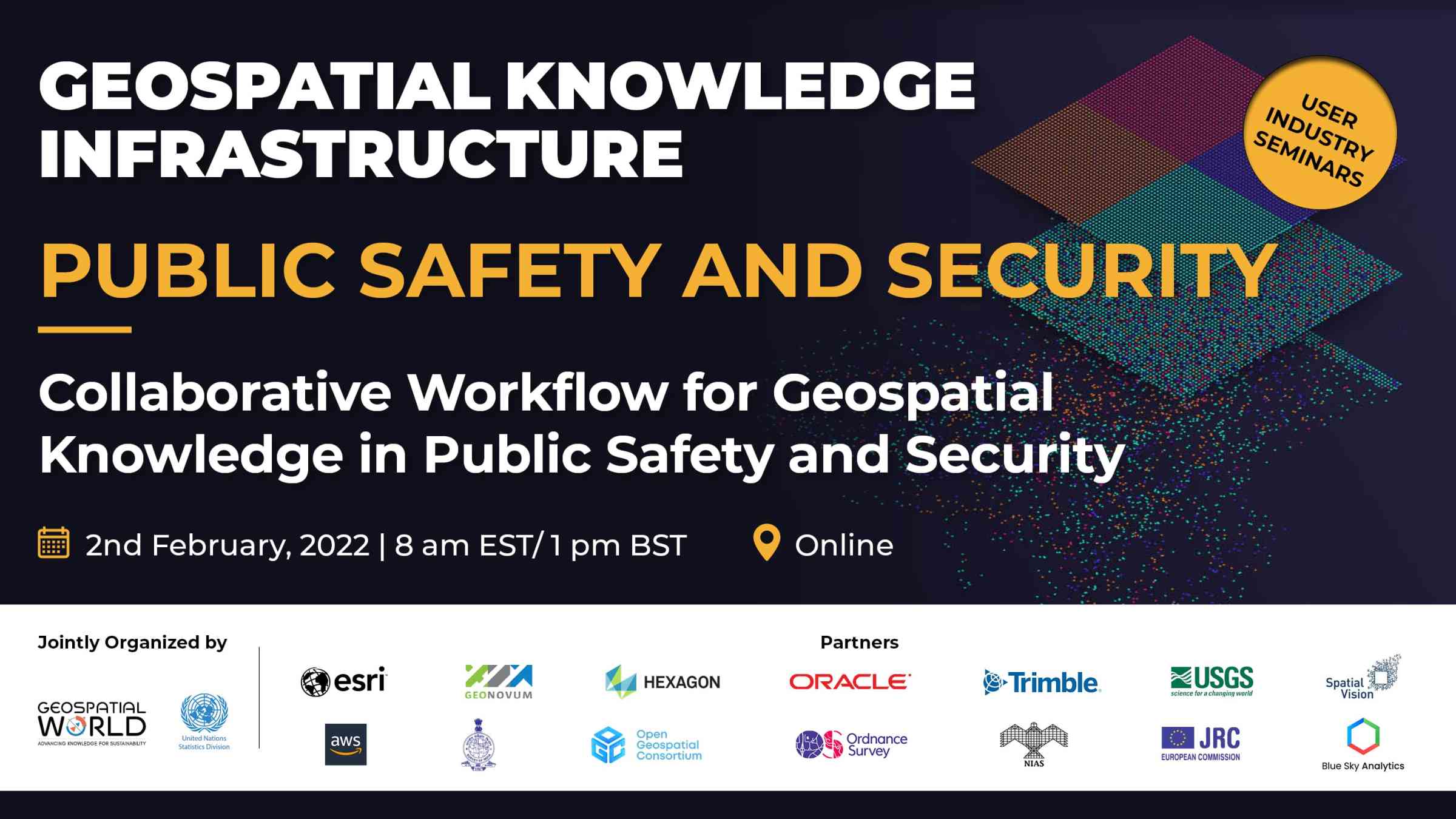Collaborative Workflow for Geospatial Knowledge in Public Safety and Security

- English
Time
08:00 EST / 13:00 BST
Overview
The rapidly changing digital and physical worlds are giving rise to a host of safety and security concerns to individuals, organizations, and communities. In the digital world, the increasing amount of data linked to individuals is leading to heightened concerns regarding privacy and security. The uncontrolled spread of information and misinformation is giving rise to grave homeland security concerns at the intersection of physical and digital worlds. Real-time geospatial-enabled knowledge and intelligence is the need of the hour to quickly identify threats and position resources to maintain safe and secure communities. The seminar will focus on identifying the value proposition and adoption of geospatial technology and information in the following three areas:
- Disaster Risk Management: Disasters and development are both correlated. The rapid pace of development across all the verticals in the economy is also making the verticals prone to the high risk of different forms of natural and man-made disasters. For the purpose of making the development process more resilient and enhancing the decision support system along with the response mechanism the integration of geospatial and frontier technology at the sophisticated level in the work flow of disaster risk management is imperative.
- Cyber-security: The past decade has seen tremendous transformation because of the digitalization which has only escalated, the risk of disclosure of data to cybercriminals is more or less certain. Geospatial technology can improve cyber defense of an organization, and it is extremely crucial to integrate it with pre-existing security systems and modules to reinforce cybersecurity strategies.
- Homeland Security: Intelligence, Surveillance, Reconnaissance (ISR) model is highly crucial for any information system to get the accurate information to the right people to make the best possible decision. GEOINT which consists of imagery, intelligence and geospatial information helps provide geographical context to Homeland Security to improve situational awareness and understand Geospatial Intelligence knowledge database better.
The evolving challenges associated with the dynamic landscape of public safety and security necessitates a cognitive approach in the workflow, through integration of frontier technology including IoT, AI, ML, 5G etc. with geospatial data and technology thereby enabling automated, collaborative, and participatory systems. The cognitive approach which places geospatial at the heart of the public safety and security workflow will enable effective decision-making by making real-time geospatial knowledge accessible to stakeholders across the workflow. In this context, United Nations Statistics Division (UNSD) and Geospatial World is developing a collaborative approach towards advancing the role of Geospatial Knowledge Infrastructure (GKI) in global society and economy, by projecting the value proposition of geospatial knowledge in diverse user sectors. It is crucial to identify the current state of adoption and integration of geospatial and frontier technology in the workflow, along with the challenges and gap areas in order to project the value proposition of a collaborative workflow for geospatial knowledge, to identify the evolving roles of diverse stakeholders, and to explore new business and partnership models for collaborative innovation.
Discussion points
- Current state of geospatial and frontier technology adoption in public safety and security ecosystem
- Benefits and challenges of evolving geospatial and frontier technology adoption
- Value proposition of real time, geo-enabled data and knowledge for public safety and security
- Evolving roles of stakeholders and opportunities for collaboration
- Disruptive business models for geospatial knowledge co-creation